Rank Species | Higher classification Sesbania | |
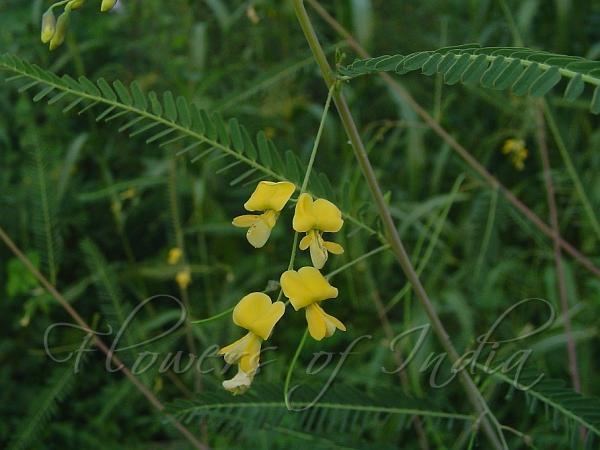 | ||
Similar Sesbania, Legumes, Sesbania rostrata, Sesbania punicea, Aeschynomene | ||
The legume Sesbania bispinosa, also known as Sesbania aculeata (Willd.) Pers., is a small tree in the genus Sesbania.
Contents
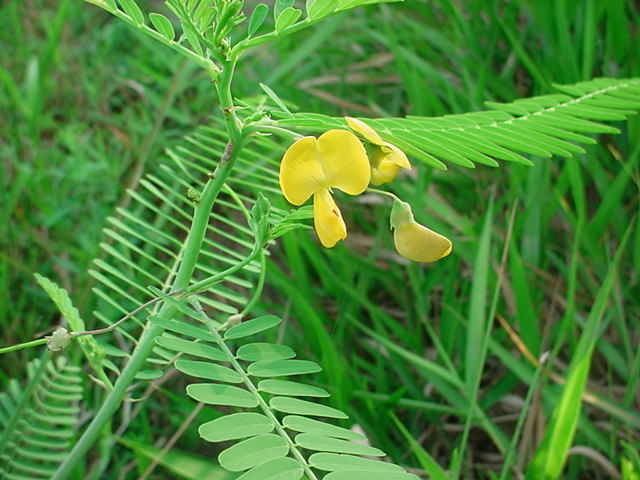
The flower is the provincial flower of Phra Nakhon Si Ayutthaya Province, Thailand. It is called dhaincha in hindi
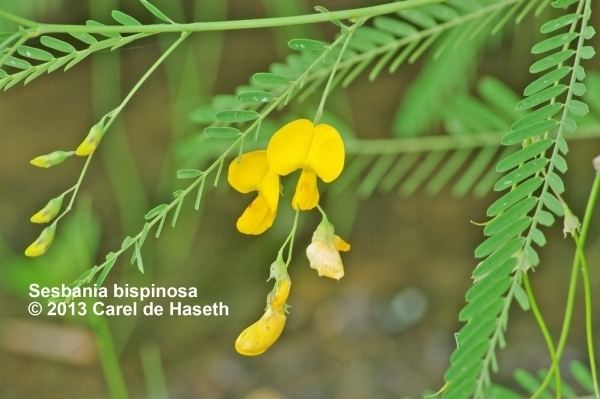
Names
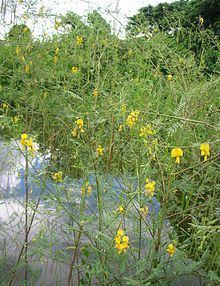
The name Sesbania is taken from its Arabic name Siesaban "سيسبان". It is known by many common names, including danchi, dunchi, dhaincha, canicha, prickly sesban, ""Jantar"" or spiny sesbania. In Vietnam, it is called điên điển gai or điền thanh gai.
Distribution and habitat
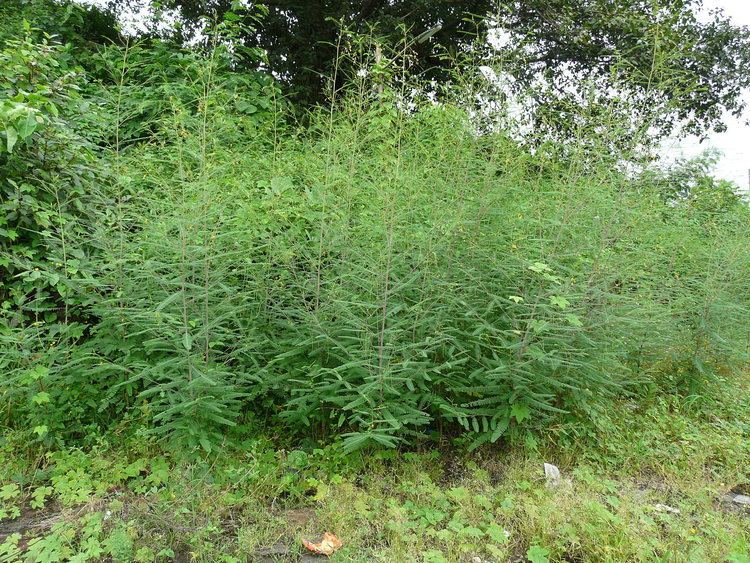
It is native to Asia and North Africa, is most common in tropical Africa where it grows as a common noxious weed, and has been introduced to the Americas. It can grow on saline soil.
S. bispinosa is adapted to wet, heavy soil but apparently adapts easily to drought-prone or sandy regions. It is cultivated widely in India and it is grown in rice paddies in Vietnam for use as firewood.
Description
It is an annual shrub which can grow to seven metres in height but usually only reaches one to two metres. It sends out fibrous, pithy stems with long leaves and bears purple-spotted yellow flowers. It produces pods which contain light brown beans.
Uses
The plant has a great number of uses, including as green manure, rice straw, wood and fodder.
Culinary uses
The yellow flowers of S. aculeata are eaten as a vegetable in Southeast Asia. They are much smaller than the more popular white flowers of Sesbania grandiflora, but similar in shape. Still, they are appreciated as food in Thai and Vietnamese cuisine.
In the Thai language the flowers are called ดอกโสน (dok sanō). They are used in Thai cuisine both cooked and raw, they can also be used to make omelettes and sweets.
